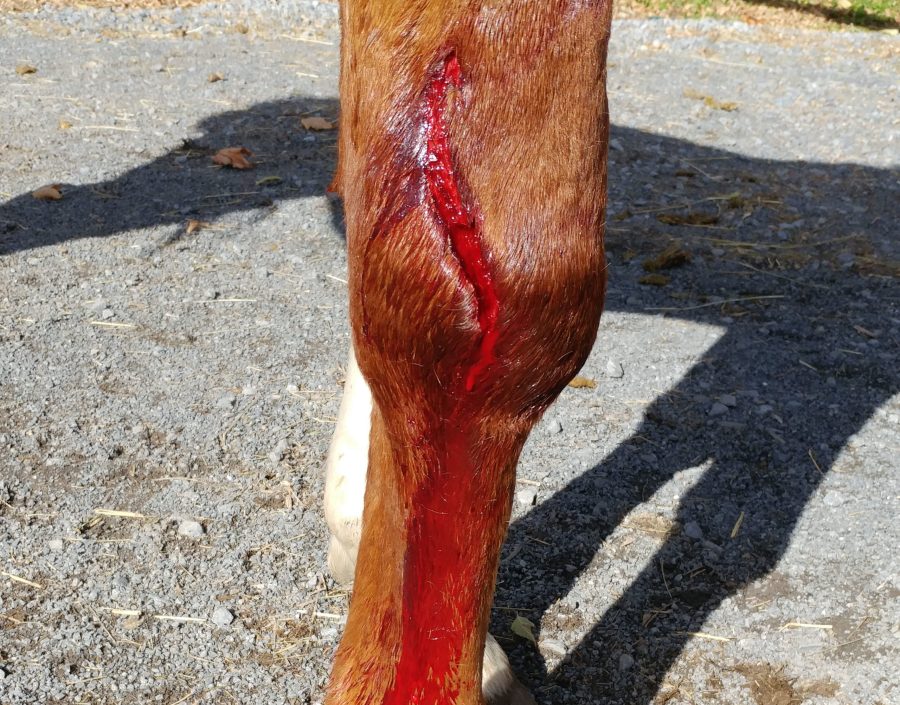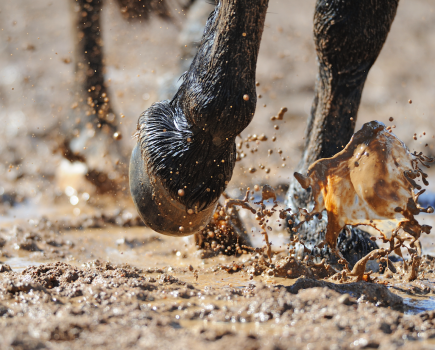Sometimes accidents happen that cause horses to bleed. How heavily they bleed indicates how urgently veterinary attention is needed, as Georgie Hollis, founder of the Veterinary Wound Library and Bandaging Angels, explains.
“Bright red, pulsing bleeding indicates an artery is involved. Any wound bleeding like this needs the vet straight away,” says Georgie.
If blood is dark red and pulsing, it’s likely to be venous. This means it is from the veins, through which deoxygenated blood returns to the heart. This is slightly less urgent, says Georgie, but should still be seen by a vet as soon as possible. Whatever you’re dealing with, try to stay calm.
“A little bit of blood goes a long way and horses can lose a lot of blood before fainting,” adds Georgie.
When you call your vet, they may advise steps to take while you’re waiting for them to arrive. For example, placing a clean bandage, swab or dressing over the wound, then using a padding to apply pressure and stem blood flow before sealing it with a top bandage.
It may be helpful to photograph the wound from different angles using your mobile phone. Use your common sense though — always call your vet first and as quickly as possible, especially if urgent veterinary assistance is required.
Your vet may ask you to send the images over to them or look at them when they arrive, so they’re prepared before they take off your bandaging.
Treating bleeding wounds
Most non-arterial wounds stop bleeding within 10 to 15 minutes. Washing a wound supports healing but must be done carefully to avoid further damage. Georgie recommends buying a two to three litre wide-neck garden sprayer.
“I use one to store dressings and gauze in, as my wound kit,” she says. “Then, when you need it, you have a clean lavage device to wash a wound.”
Clean, warm water is ideal, as it won’t hurt and will help keep cells viable, promoting healing. Cold tap water will also do, but anything used to hold or apply water must be clean.
“To make saline solution, follow a ratio of one teaspoon of salt per 500ml of water,” adds Georgie.
“If you’re spraying or using a hosepipe, make sure your horse doesn’t object — if he reacts badly it’s safest to wait for the vet.
“You need to get at least one litre of water through a wound to properly clean it,” continues Georgie.
“100ml per 1cm of wound is a minimum. If the wound starts to look grey you must stop. Don’t damage the tissue more by getting it too wet and soggy.”
Your Horse’s First Aid Week is in partnership with Absorbine










